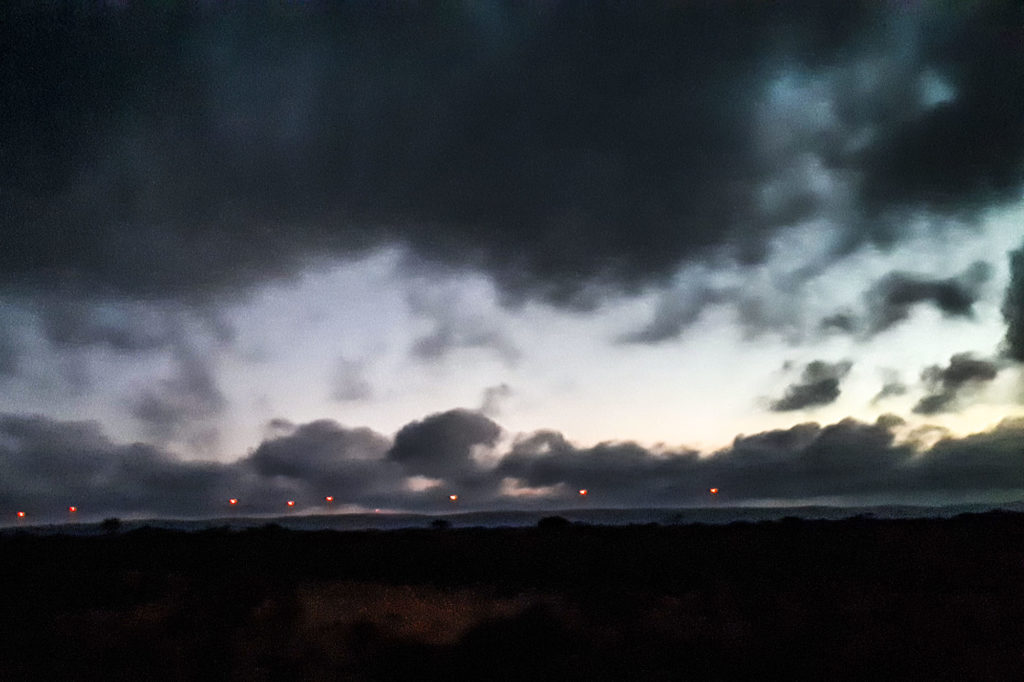Winter rainfall this year in Makhanda (Grahamstown) is well below average, according to local records.
Robin Stobbs, one of the “pluviometry” team that shares weekly rainfall figures from four locations in Makhanda (Grahamstown) with Grocott’s Mail readers, measured a paltry 0.3mm last month. July 2019 was more generous, with 14.3mm and June saw 9.10mm.
Yet the total of 23.7mm measured over June, July and August 2019 is not the lowest measured over the 44 years and eight months that Robin Stobbs, who lives in the Oatlands area, has been keeping records.
In 2000, the total for the three winter months was 14.25mm. 1995 had seen 16.75mm.
The highest winter rainfall from 1975 to date was in 1979 when 530.25mm were measured – 261.50mm in July alone plus another 218mm in August made up that 45-season high. The 45-year average for those three winter months is 119.7mm.
Stobbs emphasised that rainfall figures pertain only to the particular area where the rain gauge is situated.
“Two houses distant, for example, the absolute figures might well be different. It’s the trend and overall picture that counts. And that picture over the past three years is pretty arid.”
In Sunnyside, Gill Maylam’s recorded figures for this year’s winter were: 12.6mm (June), 18mm (July) and 1.8mm (August), totalling 31.4mm.
Meanwhile, Makhanda’s neighbour to the west, Port Elizabeth, this year received the lowest total rainfall for August in 119 years, according to records that date back to 1900. The 3.0mm measured during August broke the 1985 record low of 4.7mm for the month. This is one among many weather records recorded for August and the 2019 winter (June, July and August), according to Garth Sampson, client liaison officer for the South African Weather Service in the Eastern Cape.
Similar records were recorded over other areas of the Eastern Cape:
| August 2019 | Record | Year | Position | |
| Queenstown | 0.6 mm | 0.0 mm | 2004 | 2nd lowest since 2004 |
| Mthatha | 11.0 mm | 8.3 mm | 2015 | Not record |
| Cradock | 0.0 mm | 0.0 mm | 2010 | Equal to record |
| Port Elizabeth | 3.0 mm | 4.7 mm | 1985 | Lowest on record |
| East London | 7.4 mm | 4.9 mm | 2000 | 2nd lowest since 2000 |
Queenstown had the second winter in a row with record low rainfall, Sampson said. “In 2018 a mere 2.6mm was measured with 2.8mm in 2019. This is well below the average of 30.6mm.
Mthatha had its driest winter (1997- 2019) on record. The 11.8mm measured broke the 2014 record low of 12.4mm. It is well below the winter average of 58.5mm.
Cradock had its driest winter (1990-2019) on record with only 0.8mm measured during the 2019 winter – well below the average of 28.4mm.
“For Port Elizabeth the 98.3mm for winter was not a record, due to some nice falls in July. However the 98.3mm measured this year is well below the winter norm of 174.6mm,” Sampson said.
East London set no new record, but its 34.4mm was considerably lower than the norm of 145.5mm for winter, Sampson said.
Maximum and minimum temperatures
Most stations experienced the warmest day time temperatures for winter 2019, including Queenstown at 20.9C (1992-2019), Mthatha at 23.6C (1996-2019), Cradock at 22.3C (1990-2019) and Port Elizabeth at 21.9C (1992-2019). East London was the only station checked that did not have a record.
“Minimum temperatures were a mixed bag with some areas being above norm and others below. However, in general, most were close to norm,” Sampson said.



